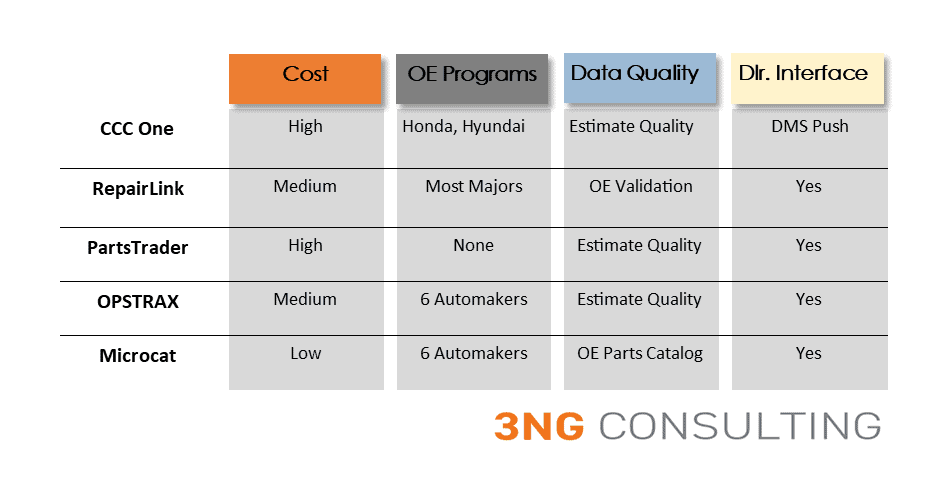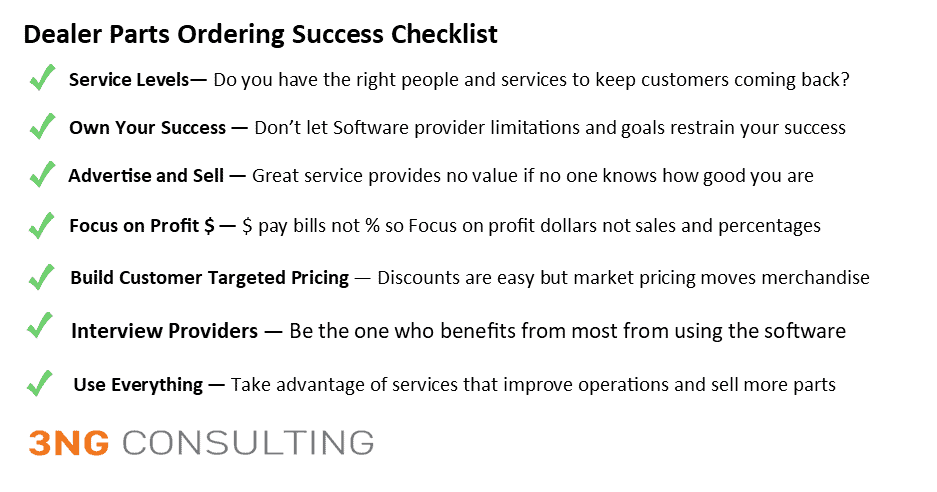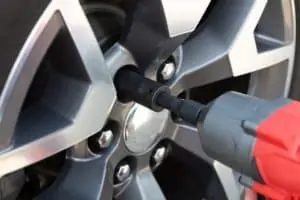Auto Parts eCommerce can be big business automakers and dealers who get the business right. So, make sure your Parts Department has the mindset, people and services you need to turn opportunity into sales.
Google defines ecommerce as “commercial transactions conducted on the internet.” However, the automotive industry views ecommerce as a DIY website.
This definition of “eCommerce” is far too vague cover the full dealer ecommerce business. Instead, the dealer parts business is split into many large and diverse segments. So, spend the time to figure out which customers you want to target and build your ecommerce solutions to sell products.
What is Parts eCommerce?
Parts eCommerce opportunity is best defined by customer segment. And each segment has different needs, expectations, and required services. And your dealership won’t sell parts online unless you can meet the high expectations of your target customer groups.
This means that eCommerce includes many market segments each with unique a unique customer base. The customer groups are best defined in the following segments.
- DIY Ecommerce – Sales to DIY customers using a traditional ecommerce website
- Fleet – Companies that possess multiple vehicles owned and maintained internally
- Wholesale Mechanical – Independent shops who perform retail repairs
- Wholesale Collision – Part sales to independent body shops
- Internet eCommerce – Internet sales to DIY customers
DIY eCommerce Stores
Many studies have shown that DIY parts eCommerce customers will only buy if they can enjoy a complete shopping experience. So, find a vendor who can offer a complete package for your online business.
Fortunately, there are high-quality companies with turnkey online store solutions. These companies offer a full suite of services including online store builders, marketing tools. social media marketing, and search engines tools.
The challenge with DIY eCommerce is building the right marketing strategies and setting the right price levels. When starting an ecommerce business, you should consider the following:
- Custom Store – Find a vendor with an online parts ecommerce website builder.
- Fulfillment Capabilities – Build the team to package and ship parts. And see if you need to add product to you inventory.
- Advertising – Make sure your vendor has digital advertising services so you can reach your target audience.
- Phone Staff – Train your staff to answer customer questions. DIY customers are not professional installers and will have basic questions.
- Revenue versus profit – Fully understand your cost structure before pricing parts. Lower prices increase internet sales but can also hammer your profits. So, make sure you set your pricing policies to support your profit goals.
Wholesale Mechanical Parts eCommerce
Wholesale auto parts ecommerce software without the right services will not increase sales. So, before you join a wholesale auto parts ecommerce service, make sure you have the right business plan.
Repair shops are small businesses with big service needs. So, before you enroll in a mechanical ecommerce solution, make sure you have the customer services that will capture sales. The areas to focus on include:
- Speed of delivery – Organize your fleet and sign up for an on-demand hotshot service so you can provide fast delivery.
- Improve your Inventory – Review the stock settings in your DMS and add products to your inventory
- Train your Staff – Teach and incent your Parts Interpreters to sell instead of administer.
- Offer Competitive Prices – A solution with dynamic pricing ecommerce software will help you increase sales and Profits. So set up your price management so your shops get optimized prices that increase sales and profits.
- Offer a decent warranty – Stand behind the products you sell with extended warranties and labor reimbursement.
- Set Reasonable Return Policies – Your customers won’t like factory return policies. So, build return policies that are competitive with the aftermarket.
- Organize your Sales Team – Target your outside sales team and track their activities with a quality CRM system.
Read more about setting up the right service mix for the wholesale mechanical business.
Wholesale Collision Parts
If you are in the wholesale business, you probably have the service levels you need to sell to collision shops. The challenge with the collision parts business is selecting the right systems.
Collision Parts eCommerce Approach
With up to 5 systems to choose from, the key is to find the right software to automate your business. Your options for choosing the right system are:
- Ask your customers – Most body shops have a system preference. Asking them will help you understand what will recruit the most buyers.
- Use a factory endorsed solution – Automakers have special pricing built into their systems. These offer factory pricing and help you push the solution to your customers.
- Target your profits– Evaluate benefits for system and choose the provider that offers the most revenue and lowest operating cost.
Collision Parts eCommerce Solutions
- CCC One – Versatile, complete system seamlessly integrated into the CCC Estimating and shop management system platform.
- RepairLink– OE Parts Ordering solution endorsed by most automakers that is currently expanding due to multiple acquisitions
- PartsTrader – System that allows shops to put an order out to multiple bidders. Brought to the US and mandated by State Farm for its DRP shops.
- OPSTRAX – All channels ordering system that includes supply chain management and is preferred by shops.
- Microcat PartsBridge – Automaker Factory data driven system that supports automaker programs and helps provides factory data to the industry.

Parts eCommerce Checklist
The following checklist will help make sure you get the most out your eCommerce Service providers.
- Build the right service levels – Service levels and Pricing capture sales, being in a marketplace may not.
- Own Your Success – Software providers are there to sell software not parts.
- Budget for Sales/Advertising – Providing great service offers no value if your customers don’t know about you.
- Focus on Profit Dollars – For the best results, focus on profit dollars not sales and gross profit percentages.
- Interview the Providers – Make sure your software provider cares about your part sales and not just your software subscription.
- Look for Additional Services – Make sure the software provider has the tools to help you succeed.
Additional Resources
View a list of top software suppliers so you don’t need to search the internet looking for suppliers.






